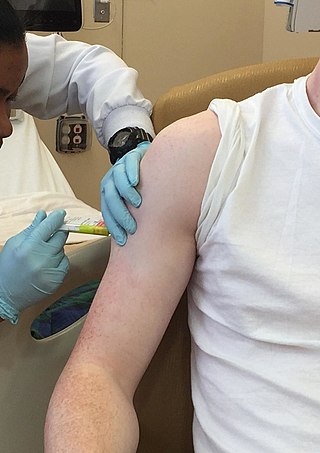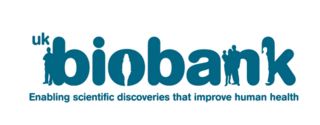A rare disease is a disease that affects a small percentage of the population. In some parts of the world, the term orphan disease describes a rare disease whose rarity results in little or no funding or research for treatments, without financial incentives from governments or other agencies. Orphan drugs are medications targeting orphan diseases.

Clinical trials are prospective biomedical or behavioral research studies on human participants designed to answer specific questions about biomedical or behavioral interventions, including new treatments and known interventions that warrant further study and comparison. Clinical trials generate data on dosage, safety and efficacy. They are conducted only after they have received health authority/ethics committee approval in the country where approval of the therapy is sought. These authorities are responsible for vetting the risk/benefit ratio of the trial—their approval does not mean the therapy is 'safe' or effective, only that the trial may be conducted.
An orphan drug is a pharmaceutical agent that is developed to treat certain rare medical conditions. An orphan drug would not be profitable to produce without government assistance, due to the small population of patients affected by the conditions. The conditions that orphan drugs are used to treat are referred to as orphan diseases. The assignment of orphan status to a disease and to drugs developed to treat it is a matter of public policy that depends on the legislation of the country.

UK Biobank is a large long-term biobank study in the United Kingdom (UK) which is investigating the respective contributions of genetic predisposition and environmental exposure to the development of disease. It began in 2006. UK Biobank has been cited as an important resource for cancer research.

The Children's Tumor Foundation (CTF) is a 501(c)(3) foundation dedicated to improving the health and well-being of individuals and families affected by NF, a group of genetic conditions known as neurofibromatosis or schwannomatosis. Their four-part mission includes propelling drug research and development through a series of strategic investments, strengthening patient support, increasing public awareness of NF and establishing best practices in clinical care for affected individuals. The Foundation is incorporated in all 50 states with active chapters and affiliates in 37 states. CTF is the largest private funder of all forms of NF research.

Genetic Alliance is a nonprofit organization, founded in 1986 by Joan O. Weiss, working with Victor A. McKusick, to advocate for health benefits in the accelerating field of genomic research. This organization is a network of over 1,000 disease advocacy organizations, universities, government organizations, private companies, and public policy organizations. They aim to advance genetic research agendas toward health benefit by engaging a broad range of stakeholders, including healthcare providers, researchers, industry professionals, public policy leaders, as well as individuals, families and communities. They create programs using a collaborative approach, and aim to increase efficiency and reduce obstacles in genetic research, while ensuring that voices from the involved disease communities are heard. They also promote public policies to advance healthcare. Genetic Alliance provides technical support and informational resources to guide disease-specific advocacy organizations in being their own research advocates. They also maintain a biobank as a central storage facility for several organizations who otherwise would not have the infrastructure to maintain their own repository.

A biobank is a type of biorepository that stores biological samples for use in research. Biobanks have become an important resource in medical research, supporting many types of contemporary research like genomics and personalized medicine.

President of the United States George W. Bush signed the Food and Drug Administration Amendments Act of 2007 (FDAAA) on September 27, 2007. This law reviewed, expanded, and reaffirmed several existing pieces of legislation regulating the FDA. These changes allow the FDA to perform more comprehensive reviews of potential new drugs and devices. It was sponsored by Reps. Joe Barton and Frank Pallone and passed unanimously by the Senate.
A glossary of terms used in clinical research.
Danon disease is a metabolic disorder. Danon disease is an X-linked lysosomal and glycogen storage disorder associated with hypertrophic cardiomyopathy, skeletal muscle weakness, and intellectual disability. It is inherited in an X-linked dominant pattern.
ClinicalTrials.gov is a registry of clinical trials. It is run by the United States National Library of Medicine (NLM) at the National Institutes of Health, and holds registrations from over 444,000 trials from 221 countries.
TREAT-NMD is a global academic network that focuses on advancing research in neuromuscular disorders. It was established in 2007 with its coordination centre at the Newcastle University. As of 2018, the network comprises over a hundred research centres and patient organisations from 54 countries as well as independent academics and patient representatives. The network's aim is to provide infrastructure to accelerating research through supporting collaboration between its members. Its main goals include improving trial-readiness worldwide, advancing patient diagnosis and care and accelerating pre-clinical research.

Congenital dyserythropoietic anemia (CDA) is a rare blood disorder, similar to the thalassemias. CDA is one of many types of anemia, characterized by ineffective erythropoiesis, and resulting from a decrease in the number of red blood cells (RBCs) in the body and a less than normal quantity of hemoglobin in the blood. CDA may be transmitted by both parents autosomal recessively or dominantly.
AstridBio Ltd. is a privately held biotechnology company based in Szeged, Hungary. Started in 2003, AstridBio's focus is in biobanking software development, data management and analysis for genomics research. Its clients include academic research institutes, pharmaceutical and biotech companies.
The Rare Diseases Clinical Research Network (RDCRN) Contact Registry is a patient contact registry started in 2004 and sponsored by the National Institutes of Health (NIH). The RDCRN Contact Registry collects and stores the contact information of people who want to participate in RDCRN-sponsored research or learn more about RDCRN research. It connects patients with researchers in order to advance rare disease research.
The Orphanet Journal of Rare Diseases is a peer-reviewed open access medical journal covering research on rare diseases. It was established in 2006 and the editor-in-chief is Francesc Palau. It is an official journal of Orphanet and is published by BioMed Central, which is part of Springer Nature.
Dynamic consent is an approach to informed consent that enables on-going engagement and communication between individuals and the users and custodians of their data. It is designed to address the many issues that are raised by the use of digital technologies in research and clinical care that enable the wide-scale use, linkage, analysis and integration of diverse datasets and the use of AI and big data analyses. These issues include how to obtain informed consent in a rapidly-changing environment; growing expectations that people should know how their data is being used; increased legal and regulatory requirements for the management of secondary use of data in biobanks and other medical research infrastructure. The approach started to be implemented in 2007 by an Italian group who introduced the ways to have an ongoing process of interaction between researcher and participant where "technology now allows the establishment of dynamic participant–researcher partnerships." The use of digital interfaces in this way was first described as 'Dynamic Consent' in the EnCoRe project. Dynamic Consent therefore describes a personalised, digital interface that enables two-way communication between participants and researchers and is a practical example of how software can be developed to give research participants greater understanding and control over how their data is used. It also enables clinical trial managers, researchers and clinicians to know what type of consent is attached to the use of data they hold and to have an easy way to seek a new consent if the use of the data changes. It is able to support greater accountability and transparency, streamlining consent processes to enable compliance with regulatory requirements.
The ICD coding for rare diseases is the International Classification of Diseases code used for the purpose of documenting rare diseases. It is important for health insurance reimbursement, administration, epidemiology, and research. Of the approximately 7,000 rare diseases, only about 500 have a specific code. However, more than 5400 rare diseases are included in ICD-11 and can be recorded using an ICD-11 URI. An ICD code is needed for a person's medical records—it is important for health insurance reimbursement, administration, epidemiology, and research. Finding the best ICD code for a patient who has a rare disease can be a challenge.
The Castleman Disease Collaborative Network (CDCN) is an organization focused on research and awareness of Castleman disease. It was founded in 2012 and has used a collaborative network approach to advance several research studies on Castleman disease.







